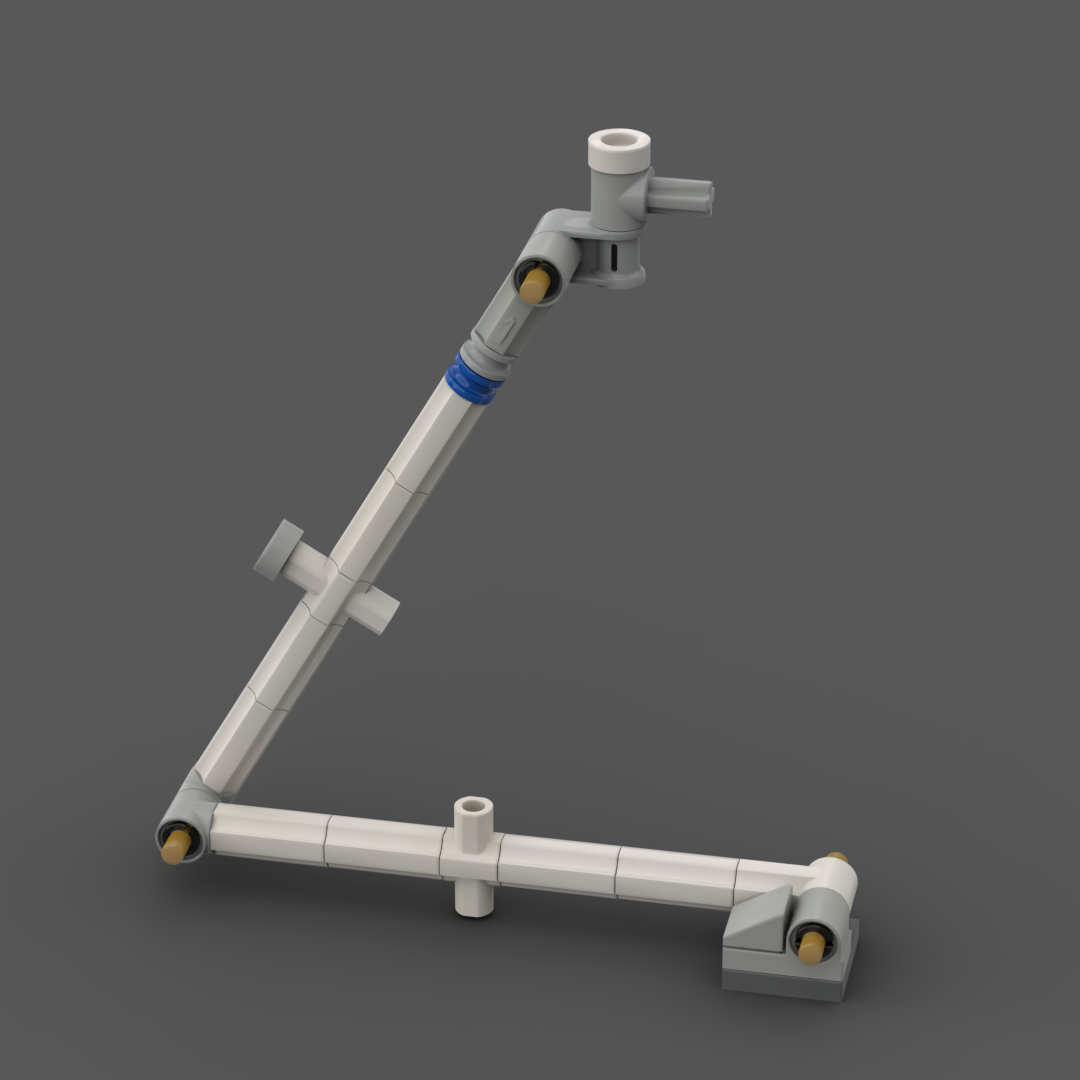
LEGO Designer:
Dan Fallon (phreaddee)
Designed:
February 2020
Launch Vehicle Details
Stages:
Length:
Diameter:
Mass at Launch:
Low Earth Orbit Capacity:
Total Thrust:
Apogee:
Class:
Officially known as the Space Station Remote Manipulator System (SSRMS). Launched on STS-100 in April 2001, this second generation arm is a larger, more advanced version of the Space Shuttle’s original Canadarm. Canadarm2 is 17.6 m (58 ft) when fully extended and has seven motorized joints (an ‘elbow’ hinge in the middle, and three rotary joints at each of the ‘wrist/shoulder’ ends). It has a mass of 1,800 kg (4,000 lb) and a diameter of 35 cm (14 in) and is made from titanium. The arm is capable of handling large payloads of up to 116,000 kg (256,000 lb) and was able to assist with docking the space shuttle. It is self-relocatable and can move end-over-end to reach many parts of the Space Station in an inchworm-like movement. In this movement, it is limited only by the number of Power Data Grapple Fixtures (PDGFs) on the station. PDGFs located around the station provide power, data and video to the arm through either of its two Latching End Effectors (LEEs). The arm can also travel the entire length of the space station truss using the Mobile Base System.
In addition to moving itself around the station, the arm can move any object with a grapple fixture. In construction of the station the arm was used to move large segments into place. It can also be used to capture unpiloted ships like the SpaceX Dragon, the Cygnus spacecraft, and Japanese H-II Transfer Vehicle (HTV) which are equipped with a standard grapple fixture which the Canadarm2 uses to capture and berth the spacecraft. The arm is also used to unberth and release the spacecraft after use.
On-board operators see what they are doing by looking at the three Robotic Work Station (RWS) LCD screens. The MSS has two RWS units: one located in the Destiny module and the other in the Cupola. Only one RWS controls the MSS at a time. The RWS has two sets of control joysticks: one Rotational Hand Controller (RHC) and one Translational Hand Controller (THC). In addition to this is the Display and Control Panel (DCP) and the Portable Computer System (PCS) laptop.
In recent years, the majority of robotic operations are commanded remotely by flight controllers on the ground at Christopher C. Kraft Jr. Mission Control Center, or from the Canadian Space Agency’s John H. Chapman Space Centre. Operators can work in shifts to accomplish objectives with more flexibility than when done by on-board crew operators, albeit at a slower pace. Astronaut operators are used for time-critical operations such as visiting vehicle captures and robotics-supported extra-vehicular activity.
Part count: bricks, lots.
| Unit | width | length | height |
|---|---|---|---|
| Studs | |||
| Inches | |||
| Centimetres |
No external URL provided.
Launch History information from space.skyrocket.de
Launch History information from space.skyrocket.de
Related Posts
None found

